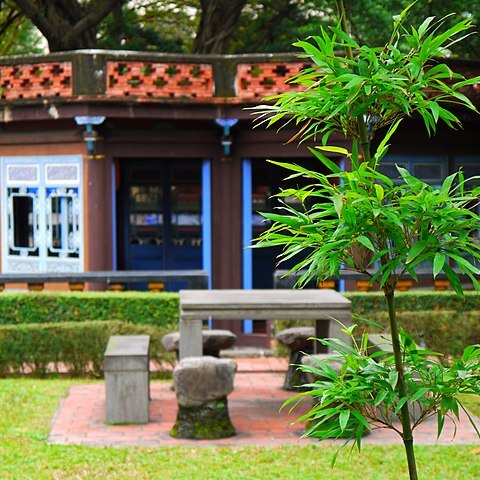A bamboo. The stems are straight and 6-16 m tall. They are 2-10 cm across. They are green when young but become more brown with age. The sections between the joints (internodes) are 12-40 cm long. There are 2 branches at each node. The leaves are oval or sword shaped and 6-15 cm long by 1-2 cm wide.

